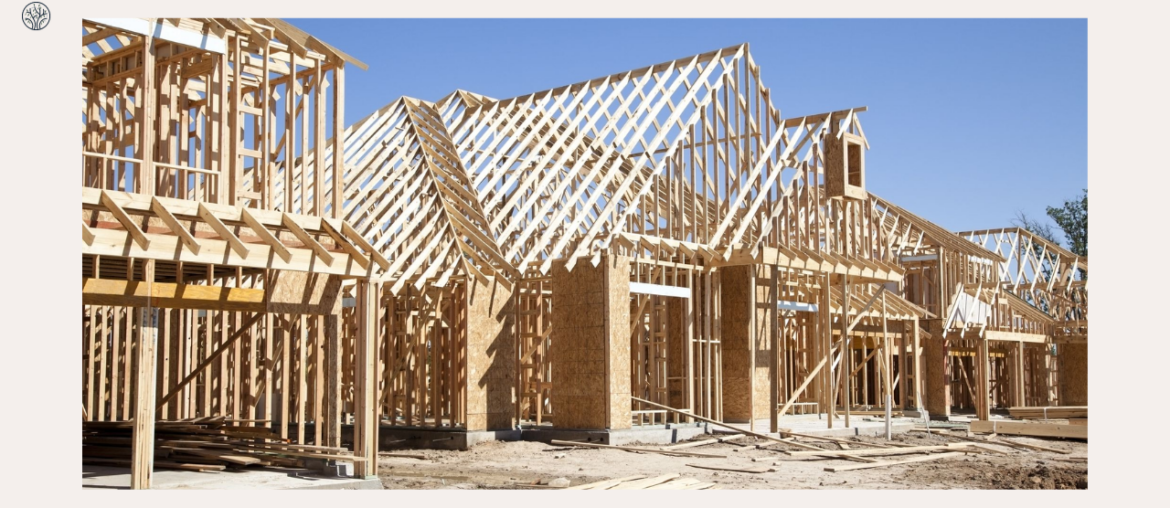Trees are an essential resource for human civilization, and one of their most common uses is building houses and other structures. But do you wonder how many trees does it take to build a house?
A 2,000-square-foot home typically needs around 16,000 board feet of wood for construction. And what’s else? This article will give more specific numbers and sustainable building options. So, read on to equip yourself with the knowledge to plan your project effectively.
Board Foot Calculation
Before diving deeper, let’s start with the basics: How do you calculate the amount of lumber you can get from a tree? The answer is board feet, a unit of volume corresponding to a piece of wood that is 1 foot long, 1 foot wide, and 1 inch thick. Knowing how to calculate board feet allows you to estimate the cost and quantity of lumber you need for your projects.
How To Know The Board Feet Of Lumber In Any Tree?
One of the most common methods to decide the board feet of lumber in any tree is to use a log rule or a log scale. It is a table that shows the estimated board feet of lumber in a log based on its diameter and length.
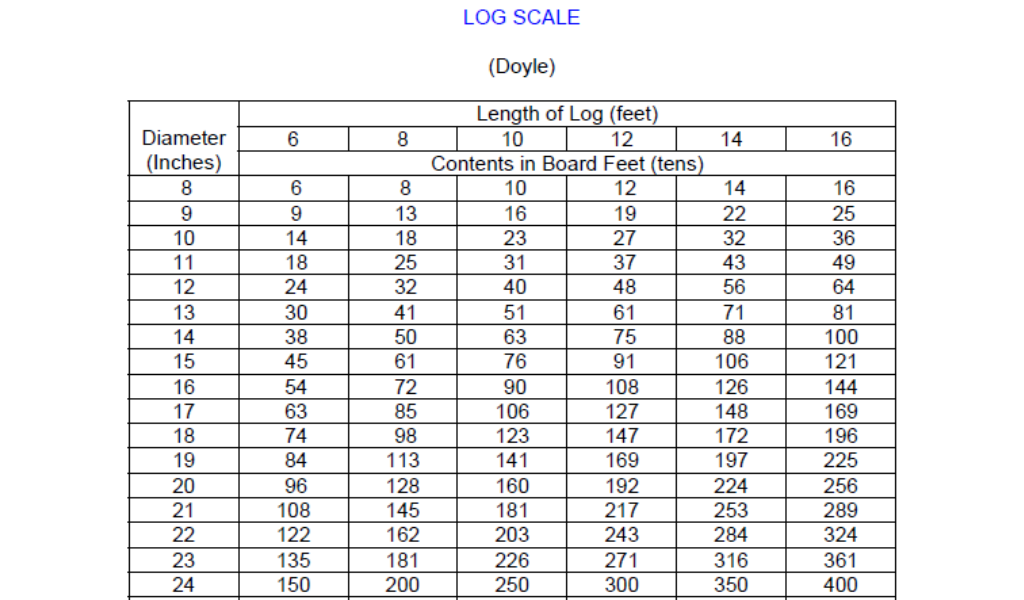
There are different types of log rules or scales, such as the Doyle rule, the International ¼-inch rule, or the Scribner rule, each with its own assumptions and calculations.
To use a log rule or scale, measure the diameter of the smaller end (not including the bark) in inches and the length of the log in feet. Then, look up where the two values meet on the table to find the estimated board feet of lumber in that log.
Alternatively, you can use a formula to estimate the board feet of lumber in any tree. Here is one of the simplest formulas, which assumes that each board is cut with a ¼-inch kerf (the width of the saw blade):
board feet = (diameter – 4)² × length/16
where diameter is the diameter of the smaller end of the log in inches (not including the bark), and length is the length of the log in feet.
Board Feet Calculator
Besides a log rule or a formula to calculate board feet, try an online board foot calculator. All you need to do is enter the dimensions of your log or board and get the result instantly.
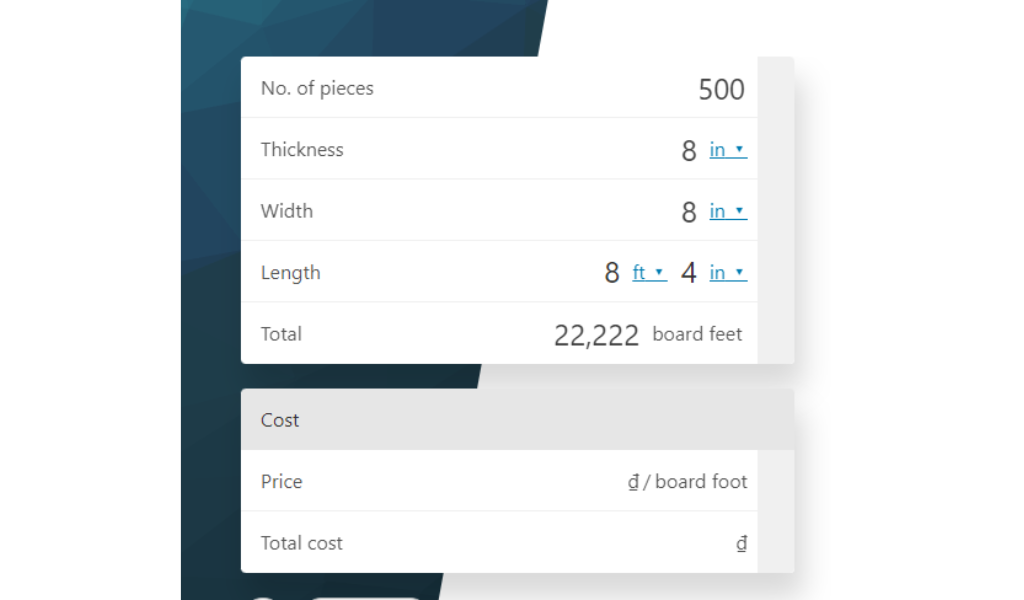
For example, if you have a board that is 8 feet long, 10 inches wide, and 1.25 inches thick, enter these values into the board foot calculator and get:
board feet = length (ft) × width (in) × thickness (in) / 12 = 8 × 10 × 1.25 / 12 = 8.33
This calculator also converts between board feet and other units of volume, such as cubic inches or cubic feet. It lets you plan your budget, optimize material usage, and create functional wood products.
Trees Required For Different Home Types
The number of trees needed to build a house depends on several factors, such as size, design, and type. Each type of house requires different amounts of wood and other materials. Here is a detailed breakdown of how many trees we need for some common home types:
Trees Needed for a 2000 Square Foot House
A 2000-square-foot house is typical for a single-family home in the United States. The average amount of lumber used to build such a house in 2019 was about 16,000 board feet. When converting board feet to cubic feet, it is equal to about 1,333 cubic feet.
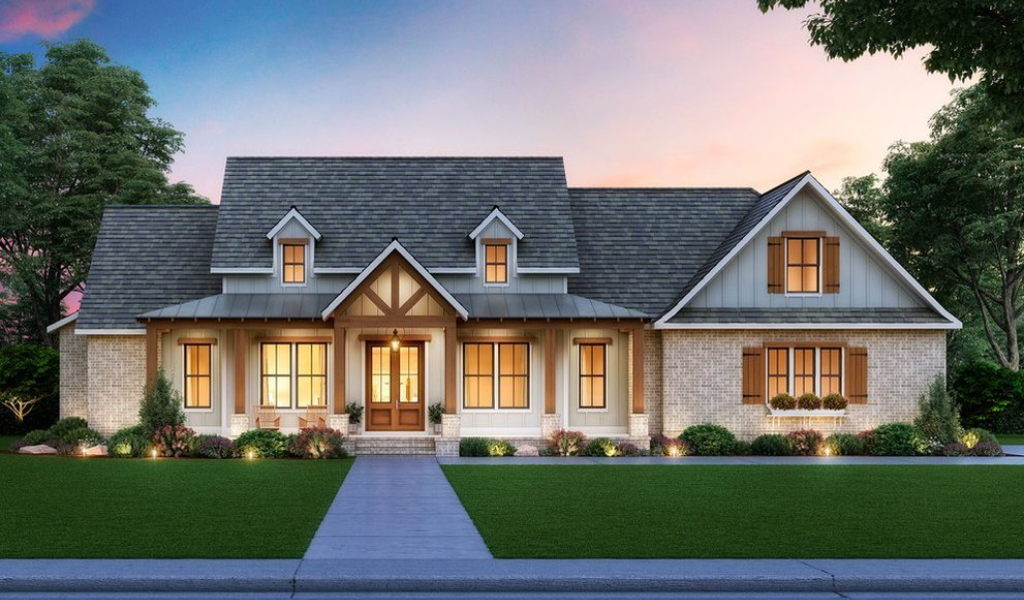
According to the USDA Forest Service, the average volume of wood per tree in the U.S. is about 15 cubic feet. However, this varies widely depending on the type and age of the tree. For example, a mature pine tree can have about 50 cubic feet, while a young oak tree’s volume is about 5 cubic feet.
Using these estimates, we can calculate that it would take about 27 pine trees or 267 oak trees to build a 2000-square-foot house using only wood. Of course, this simplified calculation does not account for other factors such as waste, transportation, processing, and non-wood materials.
Timber Requirements For A Log Cabin
Log cabins are popular among people who want a rustic and natural look for their homes. However, log cabins also require a lot of wood and can have a significant environmental impact.
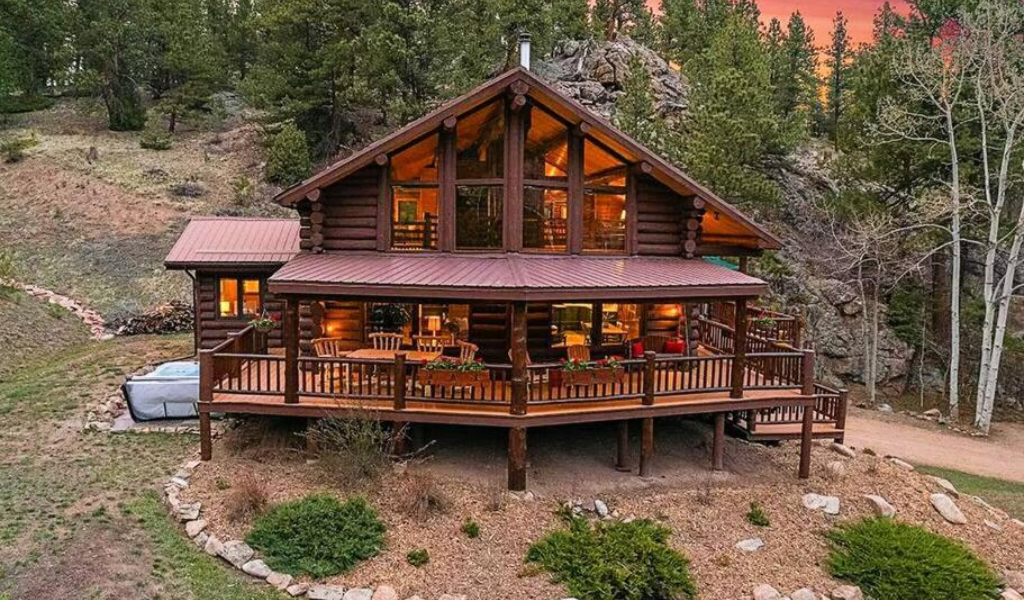
The amount of wood needed to build a log cabin depends on the size and design of the house, as well as the type and quality of the logs. The average log home in North America has a floor area of about 2,500 square feet. The average amount of wood used to build such a home is about 67 tons. A ton is equal to 2,000 pounds or about 907 kilograms.
To convert tons to cubic feet, we need to know the density of the wood. According to PennState Extension, oaks typically weigh around 70 pounds per cubic foot when freshly cut. Using this value, we can calculate that 67 tons of wood equals 1,915 cubic feet.
Using the same estimates as before, we can calculate that it would take about 383 oak trees to build a log cabin with a floor area of 2,500 square feet using only logs. Again, this simplified calculation does not account for other factors.
Lumber Essentials For A 1,000 Square Foot House
A 1,000-square-foot house is a small size for a single-family home in the U.S. The amount of lumber needed to build these houses varies on their design and features. However, we can use some averages to get an idea.
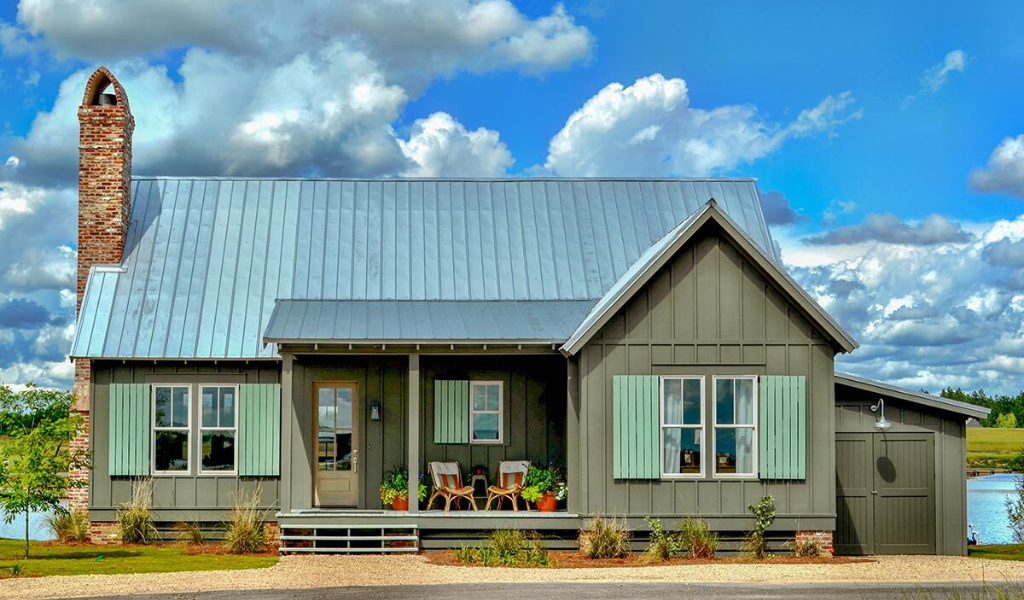
The average amount of lumber used to build a single-family home is about 6.3 board feet per square foot. Using this value, it would take about 6,300 board feet or 525 cubic feet of wood to build a 1,000-square-foot house using only wood.
Using our previous estimates for the average volume of wood per tree in the U.S., we can calculate that it would take about 10 pine trees or 105 oak trees to build this 1,000-square-foot house.
Specifics Of Tree Usage In Home Building
A 2×4 and 2×6 are typical dimensional lumber sizes used for framing and other purposes in homebuilding. A 2×4 is 1.5 x 3.5 inches, while a 2×6 is 1.5 x 5.5 inches.
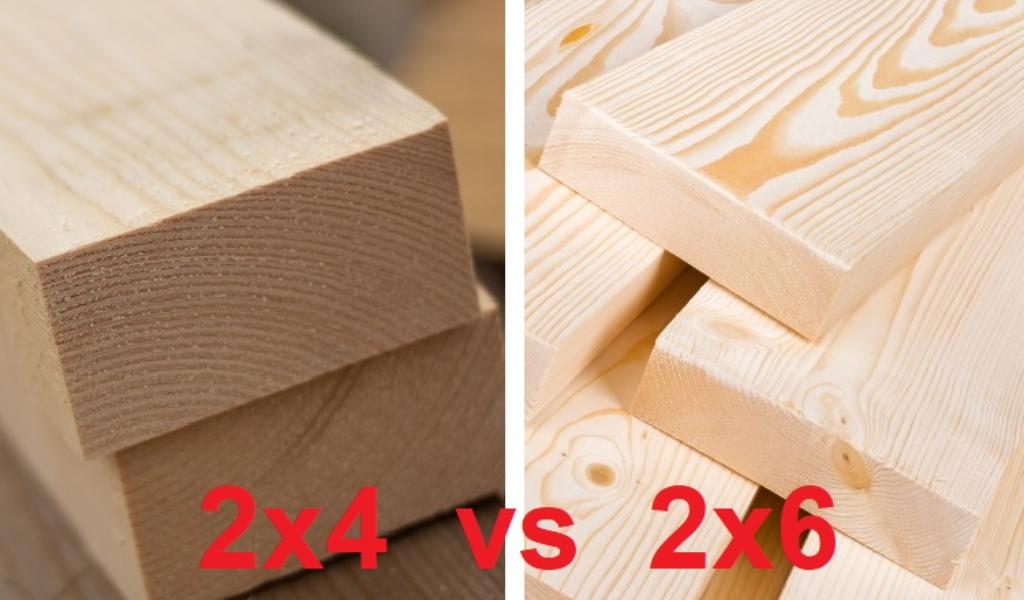
The number of 2×4 and 2×6 that can get from a tree depends on the size and shape of the tree, as well as the sawing and processing methods. However, we can use some rough estimates to get an idea.
A typical pine tree with a diameter of 16 inches and a height of 40 feet can yield about 120 board feet of lumber. With this measurement, crafting an 8-foot-long 2×4 requires approximately 0.83 board feet of wood and an 8-foot-long 2×6 needs around 1.25 board feet. Consequently, a single pine tree can yield roughly 144 pieces of 2x4s or 96 pieces of 2x6s.
Similarly, a typical oak tree with a size of 24 inches and a height of 60 feet can yield about 360 board feet of lumber. That means it would take about 0.83 board feet to make one 8-foot-long 2×4 and about 1.25 board feet to make one 8-foot-long 2×6. Therefore, we can calculate that one oak tree can produce about 432 2x4s or 288 2x6s.
Sustainable Home Building: Reducing Tree Consumption
Knowing “how many trees does it take to build a house?” allows us to estimate the enormous amount of trees cut down daily. It’s time to consider sustainable home building and discuss how to build homes responsibly by using less wood from trees.
Constructing Durable Wood Decks For Longevity
Wood decks are popular features for many homes, as they provide outdoor living space and enhance the house’s aesthetic appeal. However, wood decks also require maintenance and protection from weathering and decay.
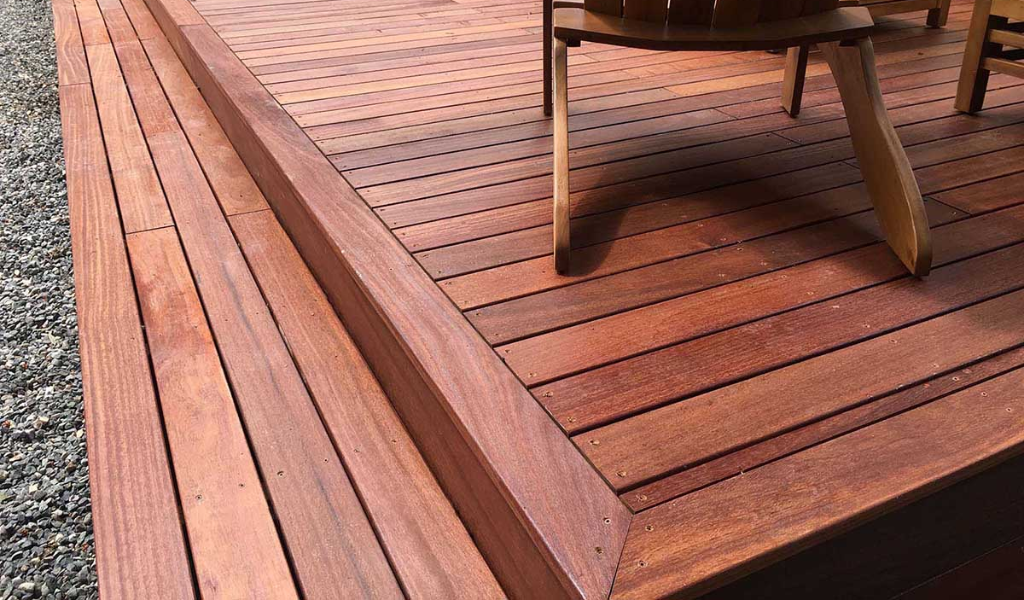
To extend the lifespan and durability of wood decks, you must choose the right type of wood for the deck. Some types of wood, like redwood, cedar, and tropical hardwoods, are more resistant to rot, insects, and moisture than others. However, these options are also more expensive and scarce than other types of wood.
Another step is to design and build the deck properly. Factors affecting the deck’s durability include the slope, drainage, ventilation, fasteners, and finishes. Doing well in these factors, homeowners and builders can reduce the amount of wood needed to repair or replace damaged decks over time.
Preserving Exposed Wood Beams
Exposed wood beams can be vulnerable to moisture, insects, fungi, and UV rays, which can cause them to crack, warp, rot, or fade over time. To prevent these problems and extend the lifespan of your wood beams, your choice of wood type for your beams matters.
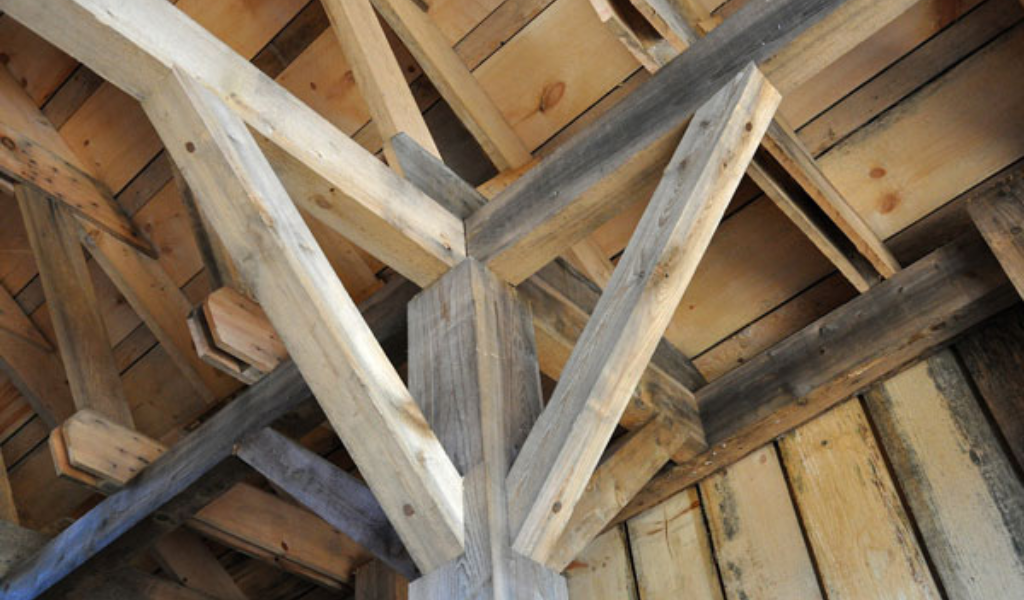
For example, cedar, redwood, cypress, and Douglas fir are the most durable and decay-resistant wood species suitable for outdoor use. These woods contain natural oils and chemicals that repel insects and fungi. They also have a tight grain structure, making them less prone to cracking and splitting.
Besides, applying a protective coating or finish to your wood beams is crucial. A layer or finish will seal the wood surface and create a barrier against moisture, insects, etc.
What’s more? Ensure to inspect and repair your wood beams regularly. Even with a protective coating or finish, your wood beams may still suffer from some damage over time due to weathering, wear and tear, or accidents. After repairing, reapply a protective coating or finish to seal the repaired areas and restore the original look of your wood beams.
See more: What trees can be cut down without permission?
Sustainable Alternatives For Framing Lumber
It takes about 22 trees to provide enough framing lumber for an average 2,000-square-foot house. That means millions of trees are cut down annually to meet the demand for framing lumber in the construction industry.
Fortunately, there are some sustainable alternatives for builders who want to reduce their impact on forests and climate change:
- Recycled lumber: These items have been reclaimed from old buildings, bridges, fences, or other sources. It can be reused as framing lumber for new houses if it meets quality and safety standards.
- Engineered wood: This composite material is made from wood fibers, strands, or veneers that are bonded together with adhesives. It provides the same or better strength and performance as solid wood while using less wood and producing less waste.
- Bamboo: Bamboo is a fast-growing grass that can be harvested every three to five years. We can use it instead of lumber framing, as bamboo has a high strength-to-weight ratio. Also, it can sequester more carbon dioxide and produce more oxygen than trees.
Broader Impacts And Considerations

Trees are not only a source of material for building houses, but also a vital part of the ecosystem and the climate system. Therefore, building a house with trees involves balancing the benefits and costs of using trees for human needs and preserving trees for environmental needs.
Some considerations of building a house with trees are:
Trees Take Time To Grow
Trees are renewable resources, but they are not infinite. They take time to grow and regenerate after being harvested. Some trees can grow faster than others, but none can grow faster than the rate of human consumption.
Therefore, building a house with trees requires careful planning and management of the available tree resources to ensure their sustainability for future generations.
Trees And Climate
Trees are crucial in regulating the climate and maintaining the ecological balance. They absorb carbon dioxide from the air and store it in their biomass, thus reducing the greenhouse effect and global warming.
Moreover, trees release oxygen into the atmosphere, thus supporting life on Earth. They also provide shade, evapotranspiration, and windbreaks, thus moderating the local temperature and humidity.
As a result, building a house with trees has environmental implications that affect the local area and the global scale.
FAQs
How many trees does it take to make paper and books?
The quantity of trees needed for one sheet of paper can differ based on the paper type, tree size, and paper manufacturing methods. Typically, it takes about 17 to 24 trees to produce one ton of paper. A standard ream of 500 sheets of office paper equals roughly 6% of a tree.
Meanwhile, in the USA, 2 billion books are made each year. Producing paper for all these books uses up to 32 million trees. It means that approximately one tree can provide enough paper for 62.5 books.
How many people are needed to build a house using a 3D printer?
When using a 3D printer to build a house, you only need 4 to 5 people to oversee the printing process. Also, it requires 2 to 3 more people to ensure the printer works smoothly and safely. That’s a total of 6 to 8 people. This number is much fewer than needed for building a house the traditional way.
Conclusion
Now you know the answer to your question: How many trees does it take to build a house? While there isn’t a one-size-fits-all answer, we’ve seen that the timber industry is evolving toward sustainability and responsible forestry practices.
As you embark on your housing project, remember that thoughtful planning and eco-friendly choices can minimize the number of trees it takes to build your home. By doing so, you are contributing to a more sustainable and greener future for all.

